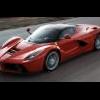Search the Community
Showing results for tags 'tests'.
-
While looking for booster seats, I found another source of testing done by Insurance Institute for Highway Safety Just though to share with parents out there.. Evaluation done in Dec 2009 http://www.iihs.org/research/topics/boosters/best_bets.html http://www.iihs.org/research/topics/boosters/good_bets.html http://www.iihs.org/research/topics/booste...ecommended.html I was already leaning towards Maxi Cosi Rodi XR from previous research and recently was considering between a Combi Kobuk highback (due to similar price point) But was surprise at Combi "Not recommended" status. together with other parents' review of it's difficult use, I will stick to Rodi XR. Any one else with booster seat experience?
-
Something to take the heat off Volkswagen I wonder who is next? http://www.bbc.com/news/business-36089558
- 44 replies
-
- 2
-

-
- mitsubishi
- mitsubishimitsubishi
- (and 8 more)
-
Data collected show electric vehicles can travel a maximum of 115km on one full charge. A SECOND phase is on the cards for the testing of electric vehicles when the initial trial ends this month, and it could involve a bigger fleet. Sources said government agencies are in talks with the trial participants about such a move, but they have not finalised the details. The Land Transport Authority (LTA), when contacted, would say only that further trials may involve car-sharing and commercial vehicle fleets. The tests to gauge the viability of electric vehicles in Singapore started in June 2011 and now includes 89 electric cars and 61 charging stations. In the second phase, several hundred to 1,000 electric vehicles could be taking part, said the sources familiar with the discussions. It is, however, unclear if it would be opened to the public. The public was not involved in the first phase. Only cars registered by companies, institutes of higher learning and government agencies were in the test-bed conducted by a multi-agency task force led by the Energy Market Authority and LTA. These cars are exempt from certificate of entitlement (COE) premiums and other car taxes. Data collected show that electric vehicles can perform in local conditions and travel a maximum of 115km on one full charge. The average driving distance is 41km, compared with 55km by fuel-powered cars. While observers note that electric cars tend to be cleaner and more energy-efficient than fuel-powered cars, they say there are two major obstacles to the electric car movement taking off. The first is the high cost of an electric car, which they say is too expensive for ordinary consumers without subsidies. For instance, a Nissan Leaf, one of four models in the test-bed, costs about $180,000 without any waivers. The second obstacle is the absence of a larger network of charging spots here. The LTA spokesman noted that electric cars have "significantly higher" upfront costs. Even with car taxes waived, the life-time cost of owning and driving the vehicle in Singapore would likely be higher than a conventional vehicle with full taxes, she said. "Nevertheless, with improved battery technology and economies of scale, EVs (electric vehicles) could become cheaper over time." Mr Thomas Jakob, managing director of Bosch Asia Pacific, which manages the trial's charging infrastructure, said opening the second phase to car-sharing makes sense as the initial higher cost of the vehicles will be spread over a bigger group. Mr Jakob added that the Government needs to take a more proactive approach to support electric cars or it could probably take till 2025 before such vehicles become mass-market cars. Mr Tom Lokenvitz, the founder of Clean Mobility Singapore and electric car-sharing scheme Smove, said there should be a "smarter structure" when it comes to such vehicles. Noting that the $20,000 rebate from the carbon emissions-based vehicle scheme does not offset the higher cost of an electric car, he suggested lowering the vehicle taxes or COE premiums for these cars. Mr Haider Rashid, region president of South Asia for power technology group ABB, wants the Electronic Road Pricing charges to be reduced for this type of car. He said another major constraint is anxiety over the maximum distance the car can travel. To overcome it, more charging infrastructure needs to be installed first, he said. But it is a "chicken and egg" situation because more cars need to be on the road to make such installations viable. Agreeing, Mr Jakob said: "Somebody has to come in and be the catalyst and push that issue along. So far, whatever has been done is not significant enough. The Government can do more." Source: http://www.straitstimes.com/breaking-news/singapore/story/electric-car-tests-charged-second-phase-20131213
- 1 reply
-
- electric car
- tests
-
(and 1 more)
Tagged with:
-
I am sure most of us have done it before during school days. Do share your ingenious ideas here during your time. I used to write notes on my thigh which is cover by the shorts i am wearing.
-
Yahoo latest report : Sobriety tests for Philippine traffic cops After reports of boozing on the job, traffic police in the Philippine capital will be required to undergo breathalyser tests, an official said Thursday. The new policy covering the 1,400 Metro Manila traffic enforcers was imposed following complaints about some personnel, said Yves Gonzales, director of Manila's traffic discipline office. "We got complaints that there were enforcers who were drinking on duty. Just three days ago, we received a complaint via Twitter that one enforcer smelled of liquor," he told AFP. He said the tests would be conducted at random as the officers reported for duty. But if the city authority received reports of a traffic cop drinking, the discipline office would deploy breath checkers to have the officer tested. Those caught face a suspension of between one and six months for the first offence and dismissal for the second, he added. The Philippine capital has some of the most densely packed and chaotic roads in Southeast Asia, with the average vehicle speed topping only about 10 kilometres (6.2 miles) an hour at peak times. Ha..ha..ha...., a country of surprises...
- 3 replies
-
- Breathalyser
- Tests
-
(and 1 more)
Tagged with:
-
Over the years safety has been a very important issue on Formula One, and it still is. Security has incredibly increased over the years with more and more safety gadgets, techlogies and car development techniques have been created to make F1 a safer motorsport. Well FIA continues its work in trying to grant that safety continues to evolve in F1 and maybe covering the cockpit might be in the plans. Here is a video from FIA's Intitute of Motor Sport Safety and Sustainability that shows tests of a possible cover of the cockpit. Check the video here What do you think? Is it a good idea? Or do you think it will change F1 forever?
-
Found the following on how to test if your car seat position is mechanically sound for your body. Try them out. An Analysis of the Driving Position in the Modern Motor Car. BRYAN MCILWRAITH (http://www.car-seat-data.co.uk/ananlysis.htm) 1) The Praying Test. Sitting in the driver's seat, place the hands together, fingertips and palms touching, pointing outwards from the chest as if praying. The wrists should actually be touching the chest. In this position the hands will form a fairly accurate perpendicular to the body and it should be possible to see if they are pointing at the centre of the steering wheel. If they are not then the wheel may be offset. 2) The Fist Test. With the seat in the normal driving position ( i.e. a position where the clutch can be fully depressed without stretching and the hips well back into the seat) make a fist with the left hand keeping the thumb to the side of the index finger. The depth of such a fist will measure approximately 50mm and it should be possible to place the fist on the crown of the head. If it is only possible to insert the flat of the hand between the roof and head then there is insufficient headroom. 3) The Look Down Test. With both hands placed evenly on the steering wheel look down at the legs. It should be possible to see equal amounts of both legs between the arms. Frequently the left leg will be visible but the right leg will be obscured by the right arm which may indicate that the shoulder girdle is rotated to the left in relation to the pelvis. 4) The Right Leg Test. This test should be performed after driving the car for a short while. Once again, look down and examine the position of the right leg. Is it elevated above the level of the left or has it fallen out towards the edge of the seat? Is the right foot roughly in line with the thigh as it should be, or has it had to come across towards the centre of the car? 5) The Kerb Height Test. Swing the right leg out of the car as though getting out, and place the right foot on the ground. Try and ensure the lower leg (shin & calf ) is in a vertical position. Now look at the surface of the right thigh. It should be sloping down towards the knee. If it is sloping upwards (ie if the knee is higher than the hip) you will have difficulty when exiting this vehicle. If the car can pass these four simple tests then there is a good chance that it is suitable for that particular driver.
-
Giancarlo Fisichella on Saturday tested a refined version of Ferrari's own F-duct solution. The Italian team's test and reserve driver was at Vairano, where what Ferrari described as the "management system for the blown rear wing" was run along with the entire Barcelona-spec package. Ferrari said that "depending on how things go in the two free practice sessions next Friday, a decision will be taken as to whether or not to use all the updates for qualifying and the race". The updated F10 also features inboard rear mirrors, in accordance with the ban that kicks off in Spain next weekend. Fernando Alonso told Corriere della Sera newspaper that he thinks Ferrari can catch F1's pacesetter. "Red Bull is stronger in qualifying and they are very fast, but we can catch up in the race. (And) McLaren knows how to develop its cars very fast, but we're not joking either," he said. Source: GMM
-
- Fisichella
- tests
-
(and 3 more)
Tagged with:
-
AutoExpress has put the 478-horsepower Nissan GT-R Spec-V through a round of semester exams, and it looks like this carbon fiber kid has the guts to make it in the real world. It motored to 60 miles per hour in 3.2 seconds, ran the slalom at 74.7 mph
- 5 replies
-
- AutoExpress
- tests
-
(and 3 more)
Tagged with:
-
Hybrid engines work by combining an energy storage unit and a fueled power source, normally a battery and an internal combustion engine. The battery is meant to recapture and store any source of energy produced and wasted throughout various driving stages; for instance the energy wasted during braking. Interestingly, Honda has found a new alternative source of energy in respect of this. The Japanese automaker is currently involved in a research using a Rankine cycle co-generation unit, in which the system works by capturing the exhaust heat from the engine and converting it to electricity. The physics behind this concept is very simple. High-pressured water is pumped into the evaporator and converted into steam by using the heat from the engine. This steam is then channelled into a volumetric expander to rotate a generator and produce electric current, which is stored in the battery pack. Honda managed to successfully defeat the uncertainties on this system, by fitting the said unit into a standard Honda Stream and testing it. The test unit generated three times more electricity than other common systems found in hybrid cars these days. Wah, impressive
-
http://www.autoexpress.co.uk/products/tota...tyre_guide.html ok, who wants to set up a company to distribute Vredestein?
-
See pdf file in link. ftp://ftp.dennisnet.co.uk/pub/autoexpress/tyretest2005.pdf Shorter version below. ftp://ftp.dennisnet.co.uk/pub/autoexpress/ The pdf file is 9.8MB so I suggest you to download it first rather than read it online.
- 19 replies
-
- Autoexpress
- 2005
-
(and 2 more)
Tagged with:
-
http://www.swri.edu/4org/d08/GasTests/home.htm The link shows you how the tests are done to see if the oil qualifies for GF3/GF4, SL or SM. As you read through you will know the temperatures and conditions are actually very tough. 16hr runs, 20hr runs, absurdly high temperatures you will never encounter like 150 deg C. Be assured that the seemingly thin oil you buy at 10W30 can withstand getting you around in Singapore w/o sacrificing protection for fuel economy.
-
Taken from: http://www.web-cars.com/detail/phorum/read...i=19899&t=19899 TST 5000 is actually called .INDINOR TST 5000, check the link: http://www.indinor.pt/webcat/product.asp?p=704 885 Fleetwax is actually Collinite #885 Wax. A marine/boat wax. So it is pretty tough. Together with Collinite #845 Wax, the good thing I hear about this thing is that is cheaper than cheap! Check here: http://www.collinite.com/ Zymol Carbon Wax is for black, red and dark colored cars. You can check out American Shine here: http://www.americanshine.com/. Aerospace is from this company called 303: http://www.303products.com I believe 2180 AS Ultra is a product of Finish Kare. http://www.fk1usa.com/index.php
-
I saw a website with lots of dyno tests results, comparing the differences before and after installing mods. Installing a cone air intake charger ONLY, will result in big drop in horsepower and torque during low rpm.. By low rpm, I mean 1000 - 3000 rpm. Sports intake vs stock intake http://www.ttzd.com/rides/dynocharts/dynochart16.html Torque dropped as much as 155 to 120. pulley vs lightened pulley http://www.ttzd.com/rides/dynocharts/dynochart33.html Big overall gain throughout power band.. Hp 263-282 Tq 329-353 Finally... NOS and no NOS http://www.ttzd.com/rides/dynocharts/dynochart44.html
- 5 replies
-
- Performance
- parts
-
(and 3 more)
Tagged with:








